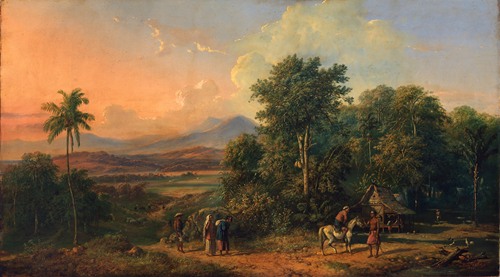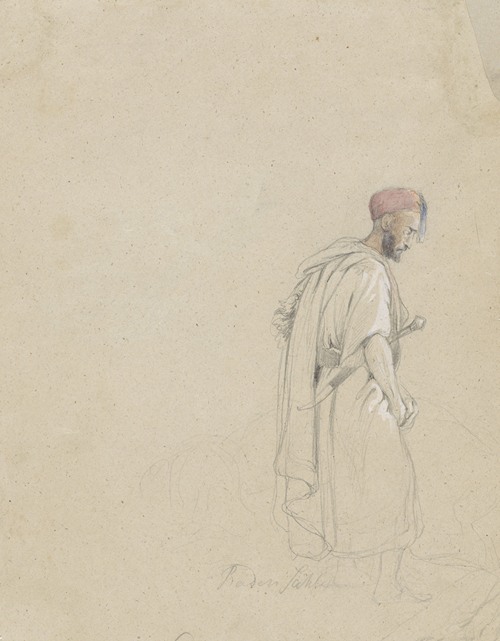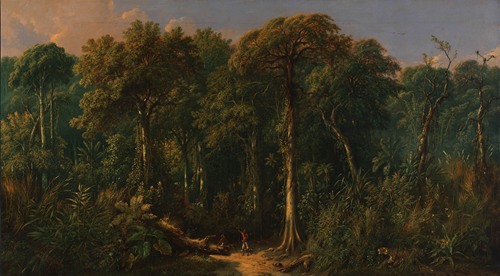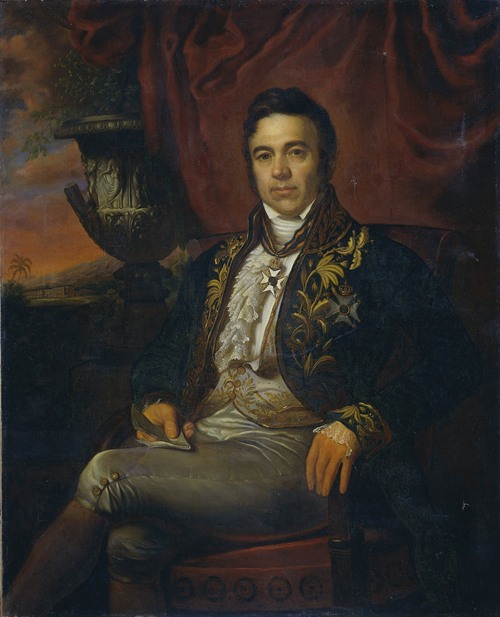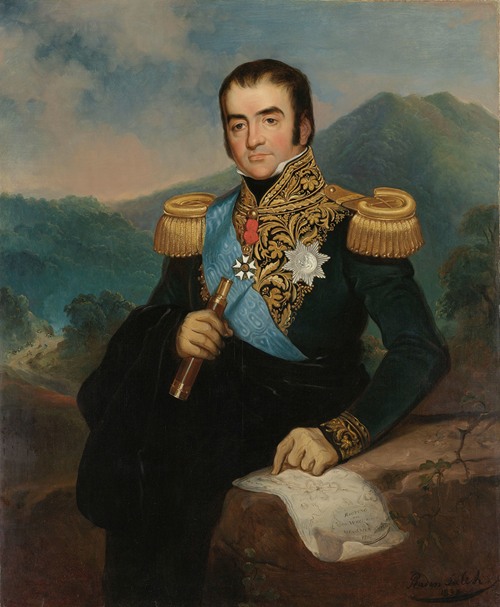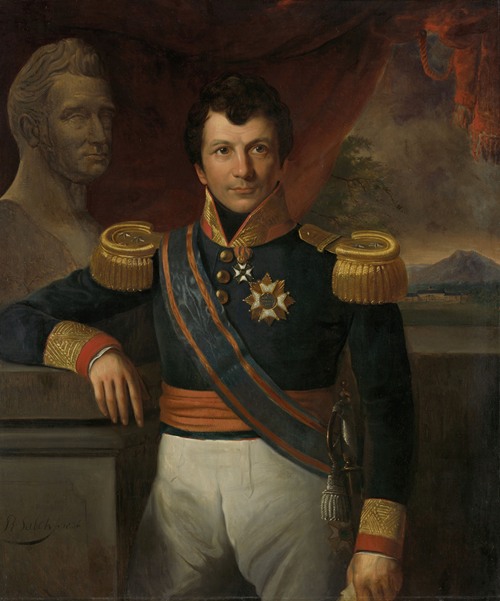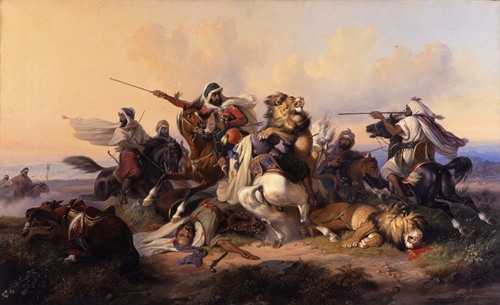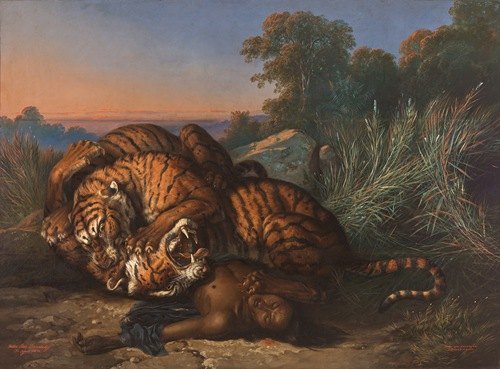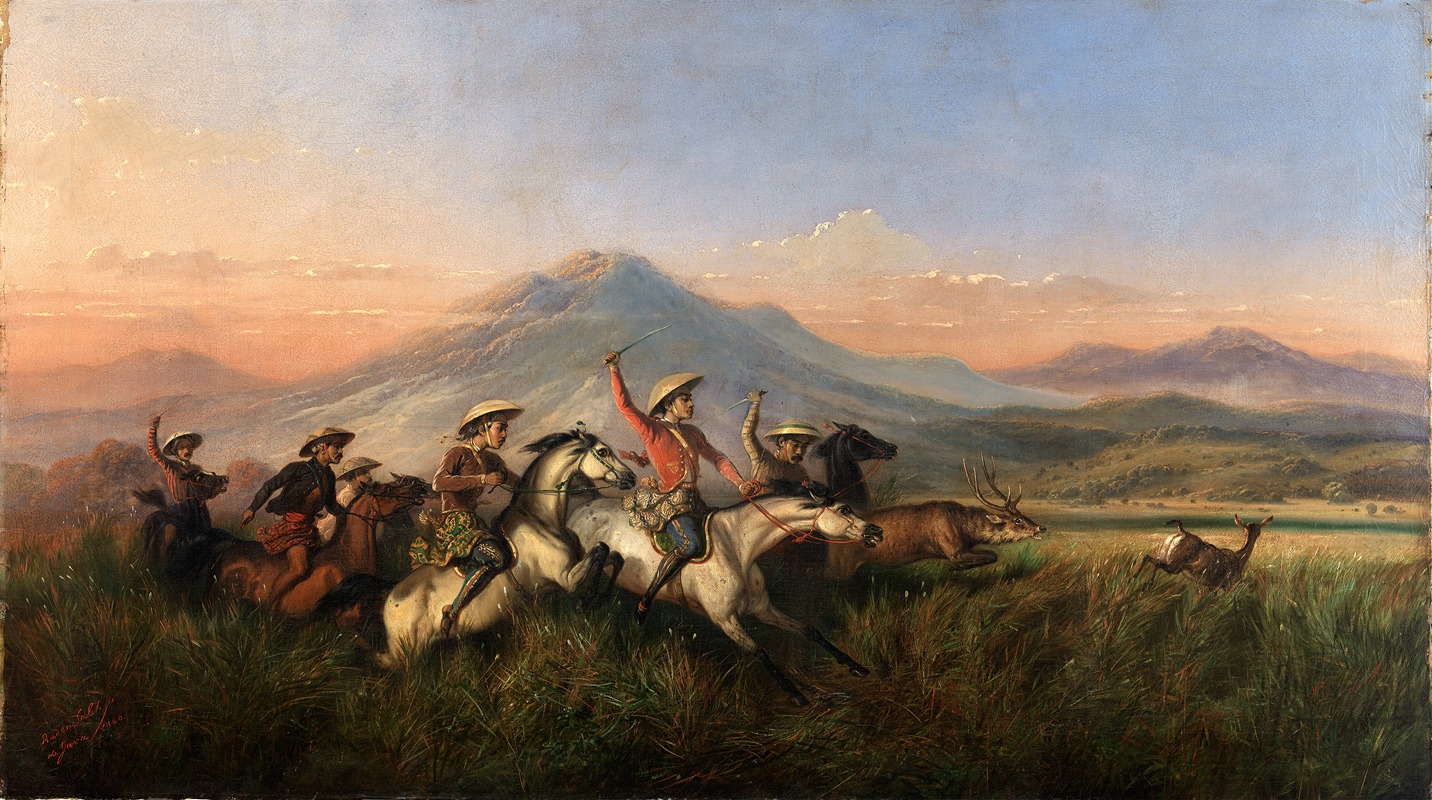
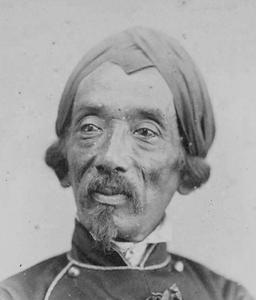
Raden Saleh Sjarif Boestaman was a pioneering Indonesian Romantic painter of Arab-Javanese ethnicity. He was considered to be the first "modern" artist from Indonesia (then Dutch East Indies), and his paintings corresponded with nineteenth-century romanticism which was popular in Europe at the time. He also expressed his cultural roots and inventiveness in his work.
Raden Saleh Syarif Bustaman was born in 1807 in Semarang on the island of Java in the Dutch East Indies (present-day Indonesia). He was born into a noble Hadhrami family where his father was Sayyid Husen bin Alwi bin Awal bin Yahya, an Indonesian of Arab descent. He was the grandson of Sayyid Abdullah Bustaman maternally. Raden Saleh was connected to Habib Ali Kwitang through his sister, Roqayah, who was married to Ali Kwitang's father Abdurrahman but had no children.
Young Raden Saleh was first taught in Bogor by the Belgian artist A.J. Payen. Payen acknowledged the youth's talent, and persuaded the colonial government of the Netherlands to send Raden Saleh to the Netherlands to study art. He arrived in Europe in 1829 and began to study under Cornelius Kruseman and Andreas Schelfhout.
It was from Kruseman that Raden Saleh studied his skills in portraiture, and later was accepted at various European courts where he was assigned to do portraits. While in Europe, in 1836 Saleh became the first indigenous Indonesian to be initiated into Freemasonry. From 1839, he spent five years at the court of Ernest I, Duke of Saxe-Coburg and Gotha, who became an important patron.
From Schelfhout, Raden Saleh furthered his skills as a landscape painter. Raden Saleh visited several European cities, as well as Algiers. In The Hague, a lion tamer allowed Raden Saleh to study his lion, and from that his most famous painting of animal fights was created, which subsequently brought fame to the artist. Many of his paintings were exhibited at the Rijksmuseum in Amsterdam. Several of his paintings were destroyed when the Colonial Dutch pavilion in Paris was burnt in 1931.
Raden Saleh returned to Dutch East Indies in 1852, after living in Europe for 20 years. He worked as conservator for the colonial collection of government art, and acted as court painter to the Governors-General. He also painted portraits of members of the colonial elite – European administrators, the Javanese priyayi or the Peranakan Chinese 'Cabang Atas' – as well as landscapes. Returning to Java, he expressed his uneasiness of living in the colonies, stating that "here, people only talks about coffee and sugar, then sugar and coffee" in one of his letters.
Upon returning, he married a wealthy Indo heiress of part-German extraction, Constancia von Mansfeld. His new wife financed the construction of Saleh's landhuis or country house on the private domain (particuliere land) that the couple had acquired, Cikini. Saleh's house was inspired architecturally by Callenberg Castle where he had stayed during his European travels c. 1844. Surrounded by vast grounds, most of them were converted into public gardens in 1862, and were closed in the turn of the century. In 1960, the Taman Ismail Marzuki was built in the former gardens. The house itself is still used today as a PGI Cikini Hospital building.
On his first wife's death, Saleh remarried to a young aristocratic woman of Yogyakarta Sultanate, Raden Ayu Danudirdja, in 1867 and subsequently moved to Bogor, where he rented a house near the Bogor Botanical Gardens with a view of Mount Salak. He later took his wife to travel in Europe, visiting countries such as the Netherlands, France, Germany, and Italy. His wife however contracted an illness while in Paris, the exact illness is still not known, and was so severe that they both immediately returned to Bogor. She died on 31 July 1880, following her husband's death three months earlier.
On Friday morning, 23 April 1880, Saleh suddenly fell sick. He claimed that he was poisoned by one of his servants, but later examination showed that his blood flow was disrupted due to a clot near his heart. Saleh was buried two days later in Kampung Empang, Bogor. As reported in Javanese Bode newspaper, 28 April 1880, his funeral was "attended by various landheeren [landlords] and Dutch officials, and even by curious students from nearby school."

